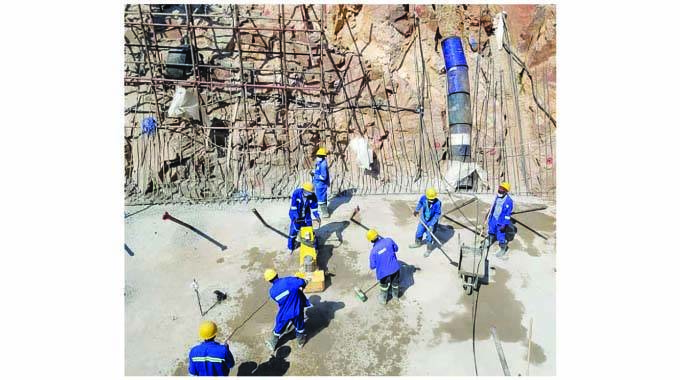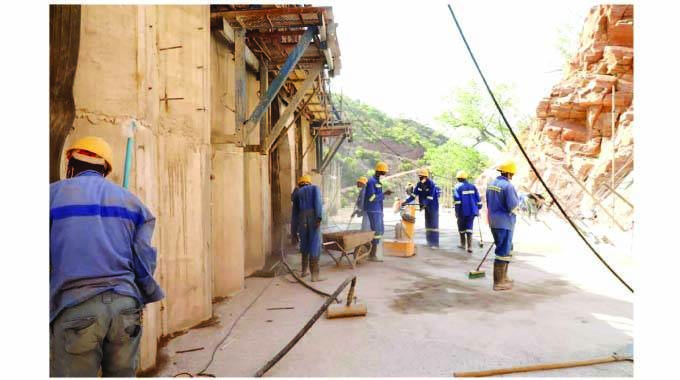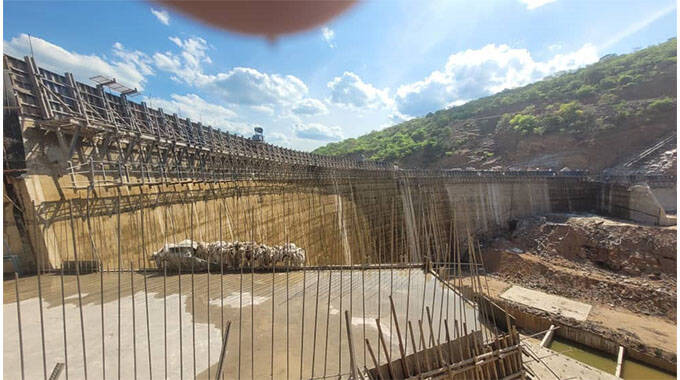The Chronicle

Nqobile Tshili, Chronicle Reporter
CONSTRUCTION works at the gigantic Lake Gwayi-Shangani in Hwange District, Matabeleland North have resumed following the release of funds by Treasury.
Lake Gwayi-Shangani, a major component of the National Matabeleland Zambezi Water Project, requires US$8 million every month.
The construction works, which were suspended on August 22 due to delays in the disbursement of funds, resumed two weeks ago. Contractors have rescheduled the deadline for the completion of the project to June next year.
The 650 million cubic metre Lake Gwayi-Shangani, one of flagship projects being spearheaded by the Second Republic, is a game changer for Bulawayo and the entire Matabeleland region.
Government has said it is committed to ensuring timely project completion to guarantee reliable water supply to Bulawayo for the next 80 years while weaning off some of its supply dams in Matabeleland South to cater for developmental projects in the largely rural province.
The massive water project is expected to ignite rural industrialisation across the Matabeleland region where communities will have access to clean water and electricity to power local institutions.
Guided by the National Development Strategy (NDS1), Government aims to increase the percentage of people with access to potable water to 90 percent from 78 percent by 2025.
The construction of the massive water body will transform the Matabeleland region as irrigation projects will be established along the pipeline thereby turning the region into a green belt.
Lake Gwayi-Shangani is part of the National Matabeleland Zambezi Water Project, an idea that was conceived over a century ago and has only been turned into reality by the Second Republic.
 Lake Gwayi-Shangani construction
Lake Gwayi-Shangani constructionThe dam is the third largest in the country after Tugwi-Mukosi and Lake Mutirikwi.
Already, Government has identified 10 000 hectares to be put under irrigation along the pipeline. Communal irrigation schemes are already being developed while commercial ones will follow along the pipeline from Lake Gwayi-Shangani to Bulawayo to spur rural development in five districts of Matabeleland North province. There are plans to set up fisheries.
The completion of the project will also see Government constructing a 10-megawatt power station at the massive dam. The contractors have since introduced night shifts to ensure work is completed within the agreed time frames.
Chinese engineers, China Water and Electric Corp, won the tender to construct the dam and Zinwa is in charge of the project, which is being solely funded by Government.
A Chronicle news crew yesterday visited Lake Gwayi-Shangani and observed workers busy at the site. Zinwa assistant resident engineer Lucio Chayeruka said the resumption of works is critical considering that a new deadline for the project has been set.
“The resumption is quite important to us given that we are working on the June 2023 deadline for its completion. Since we resumed works, we have managed to add two metres more on the dam wall, which is a significant volume covering 30 000 cubic metres,” he said.
 Lake Gwayi-Shangani construction
Lake Gwayi-Shangani constructionEng Chayeruka said they have so far constructed 39 metres out of a total of 72 metres of the dam wall.
He said following the onset of the rainy season, the construction works will soon be suspended.
“The rains are going to impact on us. As we start receiving significant flows, we will also break and resume our works either at the end of February or beginning of March next year,” said Eng Chayeruka.
“We need about US$8 million for us to construct at least four metres every month to meet the June deadline.”
Eng Chayeruka said they have adopted several cost cutting measures including use of fly ash (waste that comes from coal) as a substitute for cement.
“We are using a roller compacted technology instead of the normal conventional concrete. We blend 50 percent of fly ash with 50 percent of cement, which is useful in terms of reducing the cost of construction while achieving structural integrity,” he said.
“From the studies conducted, this is the first dam in Zimbabwe where fly ash as well as the roller compacted technology were applied. Fly ash is a fine powder that come from coal and it has almost the same properties as cement and it is also a good binder.”
 Lake Gwayi-Shangani construction
Lake Gwayi-Shangani construction Eng Chayeruka said the steel fabrication plant where they make steel pipes at the dam site has also reduced costs.
There is also mining and crushing of quarry at the site, which has also helped in cutting the costs.
Eng Chayeruka said once complete the dam will contribute to the economic transformation of the Matabeleland region and the entire country.
“This dam is transformational as it covers a number of economic facets in the country. It will boost water supplies for Bulawayo, create a greenbelt resulting in increased agricultural activities in Matabeleland North. There is also going to be power generation, which is a major boost for in terms of agriculture, tourism, mining and other economic activities in the area,” he said.
“Since we have a water body, we also expect to have a fisheries industry.”
Situated about 6,5km from the confluence of Gwayi and Shangani rivers, the concrete gravity arch dam was designed and engineered by Zinwa and has a gross capacity of 650 million cubic metres.
The project is a significant milestone that will transform the lives of many communities living along the pipeline from the dam to Bulawayo as irrigation schemes will be established taking advantage of the abundant water that will be pumped through the pipeline.

The dam is a roller compacted concrete gravity dam, implying that it depends on its weight for stability. It will have an ogee-shaped overflow, with a 200-metre-long spillway while the maximum depth of water will be 59 metres.
The construction of Lake Gwayi-Shangani is the first phase of the project which also involves the laying of a 245km pipeline from the dam to Bulawayo. [email protected]
Article Source: The Chronicle
